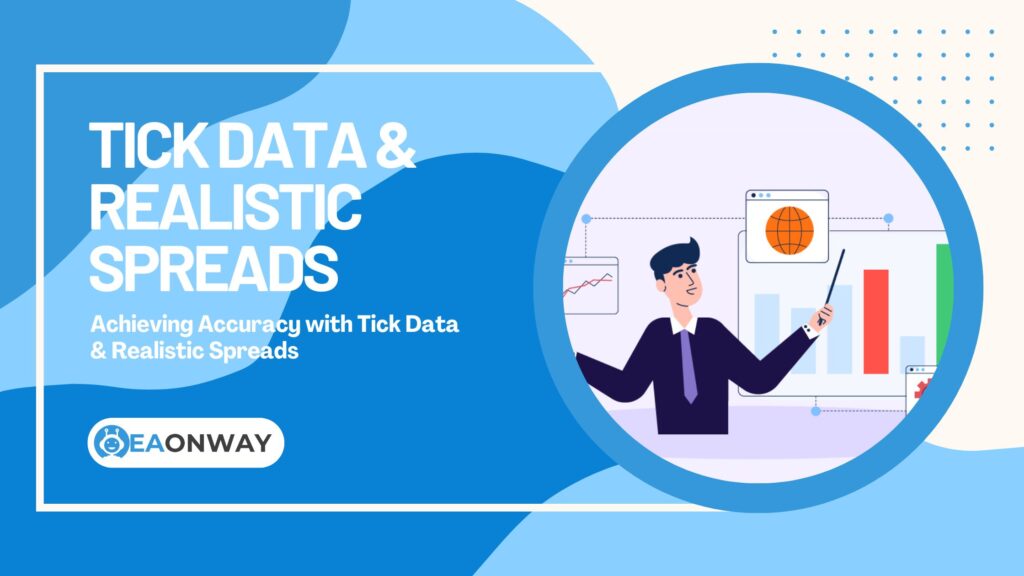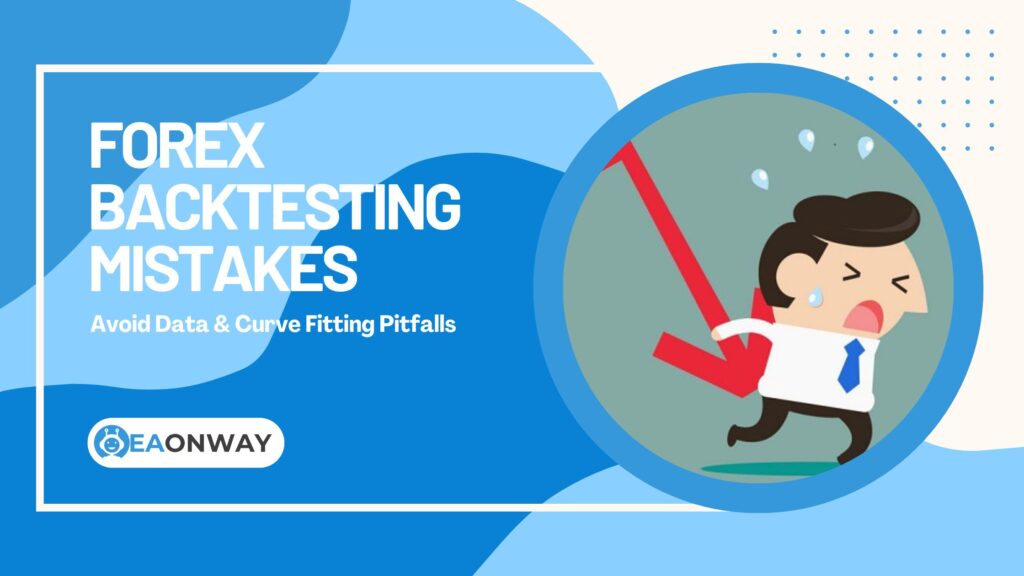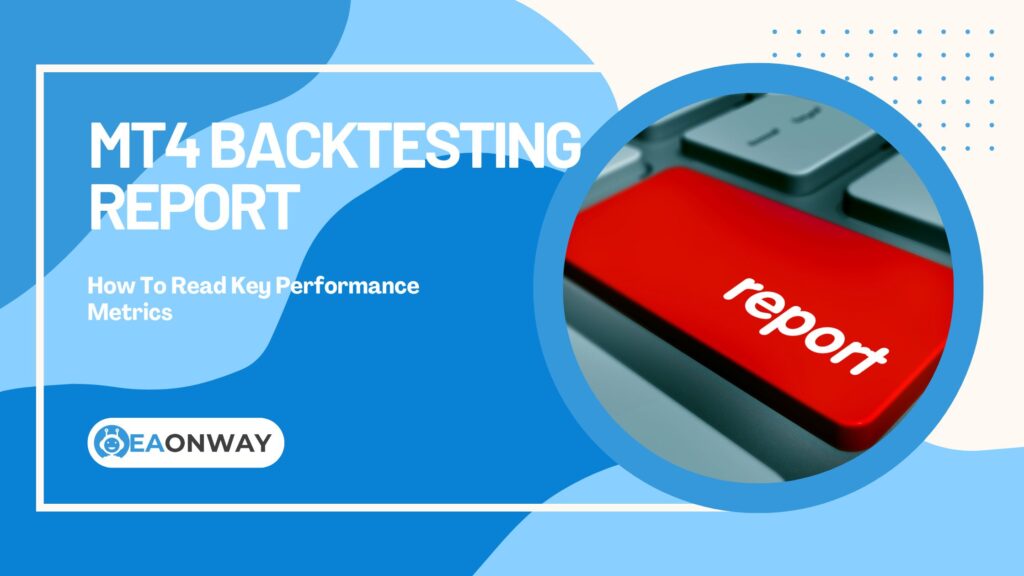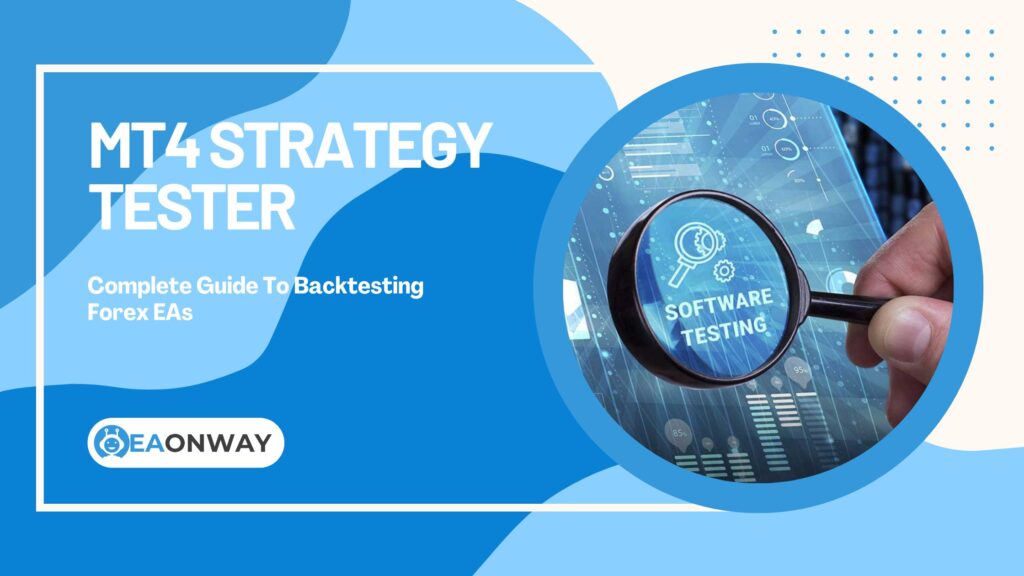Forex Backtesting: What It Is and How It Works (Essential Guide)
Have you ever wondered if a Forex trading idea or an Expert Advisor (EA) truly holds potential before risking your hard-earned capital? Forex backtesting, a crucial process involving historical Forex data analysis, offers a way to simulate how a specific trading strategy might have performed in the past. Understanding this technique is fundamental for anyone considering automated trading systems or refining their manual trading approach, allowing for a more objective assessment of potential performance and inherent risks. This trading strategy backtesting method uses historical market data to gauge viability.
Navigating the complexities of the Forex market requires preparation and insight. Relying solely on intuition or promises found online can be a recipe for disappointment. Backtesting serves as a critical reality check, providing a data-driven perspective on a strategy’s potential strengths and weaknesses based on its hypothetical past performance. It’s a cornerstone of systematic trading development and evaluation, helping traders set more realistic expectations.
This article delves deep into the world of Forex backtesting. You will learn precisely what backtesting entails, how the process works using historical Forex data, the different methods available (manual vs. automated backtesting Forex), the essential tools like backtesting software Forex, and how to interpret the results. Crucially, we will also explore the significant limitations and potential pitfalls, emphasizing why backtesting, while valuable, is not a crystal ball guaranteeing future profits but rather a vital tool for risk assessment and strategy refinement. Our focus remains purely educational, highlighting risk awareness for platforms like MetaTrader 4 (MT4) or TradingView backtesting environments.
Key Takeaways
Here’s a quick summary of the essential points covered in this guide:
- Definition: Forex backtesting is the process of applying a trading strategy’s rules to historical market data to simulate how the strategy would have performed during that past period.
- Purpose: It aims to validate a strategy’s logic, assess potential profitability, understand risk exposure (like maximum drawdown), and set realistic expectations before live trading or using a Forex EA.
- How it Works: It involves sourcing quality historical Forex data, defining precise entry/exit rules, and using software (like the MT4 strategy tester or dedicated platforms) or manual charting to simulate trades based on those rules.
- Methods: Can be done manually (reviewing charts bar-by-bar) or automatically (using specialized software or programming languages like Python for Forex backtesting). Automated is faster and less prone to human error for complex strategies.
- Data is Crucial: The reliability of backtesting heavily depends on the quality, accuracy, and timespan of the historical Forex data used (tick data backtesting offers higher precision but demands more resources).
- Key Metrics: Performance is evaluated using metrics like net profit, profit factor, maximum drawdown, win rate, and the number of trades.
- Pitfalls: Beware of curve fitting (over-optimization), hindsight bias, inaccurate data, ignoring trading costs (spreads, commissions, slippage), and the fact that past performance doesn’t guarantee future results due to changing market conditions.
- Not a Guarantee: Backtesting provides insights into historical possibilities, not future certainties. It’s a tool for evaluation and risk management, not prediction. Combining it with forward testing is recommended.
Understanding Forex Backtesting: The Fundamentals
Before diving into the mechanics, let’s establish a clear understanding of what Forex backtesting is and why it’s considered such an important step in the trading process, particularly when evaluating automated systems like Forex EAs.
What Exactly is Forex Backtesting?
Forex backtesting is the method of simulating a trading strategy on historical price data. Think of it like test-driving a car design using a sophisticated computer simulation before building a physical prototype. You define a set of precise rules for entering and exiting trades (your strategy), and then you apply these rules to past Forex market data (e.g., historical prices for EUR/USD over the last five years) to see what trades would have been triggered and what the hypothetical outcome (profit or loss) would have been. This process generates performance reports and metrics that help evaluate the strategy’s historical viability.
According to FeneFX, “Backtesting is the process of testing a trading strategy or Expert Advisor (EA) on historical data to see how it would have performed during past market conditions” (Source: FeneFX).
Why is Backtesting Crucial in Forex Trading?
Backtesting is crucial because it offers an objective, data-driven way to assess a trading strategy before committing real money. Its primary purposes include:
- Strategy Validation: Does the strategy’s logic generate potentially profitable trades based on historical patterns?
- Performance Expectation: What kind of results (profits, losses, drawdown) might the strategy have produced historically? This helps set realistic expectations, moving away from unrealistic profit dreams often peddled online.
- Risk Assessment: How much capital might the strategy have lost during its worst periods (maximum drawdown)? Understanding potential historical risk is vital for capital allocation and psychological preparation. Financial regulators frequently warn consumers about the high risks associated with speculative products like Forex. For instance, the U.S. Commodity Futures Trading Commission (CFTC) provides resources highlighting the risks involved in Forex trading (Source: CFTC Forex Trading Resources).
- Strategy Refinement: Backtesting can reveal weaknesses in a strategy’s rules, allowing for adjustments and improvements (though this carries the risk of over-optimization).
- Comparing Strategies: It allows for a somewhat standardized comparison of different trading approaches based on their historical simulated performance.
Without backtesting, traders are essentially flying blind, relying on guesswork or unverified claims, which significantly increases the risk of financial loss in the volatile Forex market.
How Does Forex Backtesting Actually Work?
The core mechanism involves a systematic application of predefined trading rules to a historical dataset. Here’s a simplified overview:
- Define the Strategy: Every rule must be explicit and unambiguous. This includes entry signals (e.g., moving average crossover, specific indicator level), exit signals (e.g., take profit level, stop-loss level, trailing stop), and position sizing rules.
- Obtain Historical Data: Acquire accurate price data for the desired currency pair(s) and timeframe(s) covering a significant period. The quality of this historical Forex data is paramount.
- Simulate Trade Execution: The backtesting engine (software or manual process) steps through the historical data chronologically. When the data triggers an entry rule, a hypothetical trade is opened. When an exit rule is triggered, the trade is closed, and the profit or loss is recorded.
- Account for Costs: Realistic backtesting must simulate trading costs like spreads (the difference between buy and sell prices), commissions (broker fees), and potentially slippage (the difference between the expected execution price and the actual execution price – harder to simulate accurately).
- Generate Performance Report: Once the simulation completes covering the entire data period, the system compiles various performance metrics (discussed later) to summarize the strategy’s hypothetical historical performance.
AI Journal elaborates: “The backtesting process involves simulating trades based on historical market data, allowing traders to evaluate their strategies’ performance before risking real money” (Source: AI Journal).
The Mechanics: How to Perform Forex Backtesting
Now that we understand the ‘what’ and ‘why,’ let’s explore the ‘how.’ Performing effective Forex backtesting requires careful consideration of data and methodology.
What Historical Data Do You Need for Reliable Backtesting?
The quality and type of historical data used are arguably the most critical factors influencing backtesting reliability. Poor data leads to garbage results (“garbage in, garbage out”). Key considerations include:
- Data Type:
- Tick Data: The highest resolution data, recording every single price tick. Tick data backtesting provides the most accuracy, especially for short-term strategies or those sensitive to intra-bar price movements, but requires significant storage and processing power.
- 1-Minute (M1) Data: Provides the Open, High, Low, and Close (OHLC) price for every minute. A common and often sufficient resolution for many strategies, offering a balance between accuracy and resource requirements. Lower frequency data (H1, H4, D1) can be used but may obscure important intra-bar price action needed for accurate signal timing.
- Data Quality: The data must be accurate and clean, free from errors, gaps, or spikes. It should ideally include both bid and ask prices to accurately simulate spread costs.
- Data Source: Obtain data from reputable providers or directly from your broker (though broker data might sometimes be specific to their liquidity pool). Ensure the data reflects realistic market conditions, including variable spreads if possible.
- Data Duration: The backtesting period should be long enough to cover various market conditions (trending, ranging, volatile, quiet). Several years of data are generally recommended, but the optimal length depends on the strategy’s nature.
Forex Tester, a specialized backtesting platform, notes: “The quality of your historical data directly impacts the accuracy of your backtesting results. Using tick data provides the most precise simulation, especially for scalping strategies” (Source: Forex Tester).
Using freely available data (e.g., from MetaTrader platforms) can be convenient but sometimes lacks the quality or tick-level granularity needed for rigorous testing. Premium data sources often offer higher quality but come at a cost.
Manual vs. Automated Backtesting: What’s the Difference?
There are two primary approaches to conducting Forex backtesting:
Manual Backtesting Forex:
- Process: Involves manually scrolling through historical charts (bar by bar or candle by candle) on a trading platform like TradingView or MT4. The trader identifies trade setups based on their strategy rules, notes down hypothetical entry/exit points, calculates profit/loss, and manually logs the results in a spreadsheet.
- Pros: Helps internalize price action and strategy behavior deeply. Requires minimal specialized software beyond a charting platform. Allows for discretionary elements (though this can introduce bias).
- Cons: Extremely time-consuming and tedious, especially for long periods or multiple pairs. Prone to human error in calculation and execution consistency. Hindsight bias (subconsciously altering decisions based on knowing future price movement) is a major risk. Difficult for complex strategies with many rules.
Automated Backtesting Forex:
- Process: Uses specialized software or programming to automatically apply the strategy rules to historical data. The trader codes the strategy (or uses a pre-built EA) and runs it through a backtesting engine (like the MT4 Strategy Tester, TradingView’s Strategy Tester, or custom scripts in Python/R). The software handles trade simulation, calculations, and report generation.
- Pros: Extremely fast, allowing years of data to be tested quickly. Consistent application of rules eliminates execution errors. Objective results (assuming correct coding and data). Can handle complex strategies easily.
- Cons: Requires coding skills or reliance on pre-built software/EAs (whose internal logic might not be fully transparent). Quality depends heavily on the backtesting engine’s accuracy and the historical data quality. Can still suffer from issues like unrealistic slippage/spread simulation if not configured correctly.
Trading Heroes observes: “Manual backtesting gives you a deeper understanding of market behavior and your strategy’s nuances, while automated backtesting provides speed and consistency. Each method has its place in strategy development” (Source: Trading Heroes).
For serious strategy evaluation, especially involving EAs, automated backtesting is generally preferred due to its speed, consistency, and objectivity.
Step-by-Step Guide to Basic Manual Backtesting
If you wish to try manual backtesting to better understand price action:
- Choose Platform & Pair: Open your preferred charting platform (e.g., TradingView) and select the currency pair and timeframe.
- Define Rules Clearly: Write down your exact entry, exit (stop-loss and take-profit), and trade management rules. Be precise.
- Go Back in Time: Scroll the chart back to a point significantly in the past.
- Advance Bar by Bar: Move the chart forward one bar (candle) at a time. Do NOT peek ahead.
- Apply Rules: At each new bar, check if your entry or exit rules are met based only on the information available up to that bar.
- Log Trades: If an entry signal occurs, record the date, time, entry price, and initial stop-loss/take-profit levels in a spreadsheet. If an exit signal occurs for an open trade, record the exit price, date/time, and calculate the profit/loss (in pips and/or percentage of hypothetical capital).
- Repeat: Continue advancing bar by bar and logging trades over a substantial historical period.
- Analyze Results: Once finished, calculate performance metrics from your log (total profit/loss, win rate, average win/loss, longest losing streak, estimated drawdown).
Overview of Automated Backtesting with Software
Automated backtesting streamlines this process significantly:
- Select Software/Platform: Choose a platform like MetaTrader 4 (using its Strategy Tester), MetaTrader 5, TradingView (Strategy Tester feature), NinjaTrader, or specialized software (e.g., Forex Tester), or use programming languages like Python with relevant libraries (e.g., Backtrader, Zipline).
- Code or Load Strategy: If using MT4/MT5, you’ll need the strategy coded as an Expert Advisor (EA). In TradingView, you use Pine Script. In Python, you code the logic yourself. Some platforms allow visual strategy building.
- Configure Settings: Select the currency pair, timeframe, historical data period, initial deposit size, and crucially, realistic parameters for spread, commission, and potentially slippage simulation.
- Run the Test: Initiate the backtest. The software will process the historical data according to your strategy rules.
- Review Report: Analyze the detailed performance report generated by the software, focusing on key metrics and the equity curve.
According to Admiral Markets: “MetaTrader 4 and 5 provide comprehensive backtesting environments where traders can analyze strategy performance across different timeframes and market conditions. The Strategy Tester offers detailed reports on trade performance, drawdown, and profitability” (Source: Admiral Markets).
Essential Tools and Platforms for Backtesting
The right tool can significantly impact the efficiency and reliability of your Forex backtesting efforts.
What Software Can Be Used for Forex Backtesting?
Several options exist, catering to different needs and technical skills:
- MetaTrader 4/5 Strategy Tester: Built into the popular MT4 and MT5 platforms. Widely accessible, especially for testing EAs developed for these platforms. Offers different simulation modes (Every tick, Control points, Open prices only). Quality depends heavily on the broker’s historical data feed quality and proper settings.
- TradingView Strategy Tester: Integrated into the TradingView charting platform. Uses Pine Script for strategy definition. Offers good visualization and a large user community sharing scripts, but backtesting capabilities might be less granular than dedicated software for tick-level accuracy unless using premium data.
- Dedicated Backtesting Software: Programs like Forex Tester are specifically designed for highly detailed manual and automated backtesting, often allowing the use of high-quality purchased tick data and offering more sophisticated analysis tools than platform-integrated testers. They usually come at a cost.
- Python Libraries: For those with programming skills, libraries like Backtrader, Zipline, or VectorBT offer immense flexibility to build custom backtesting engines, integrate various data sources, and perform complex analyses. This requires significant technical expertise.
- Broker-Specific Platforms: Some brokers offer proprietary platforms with their own backtesting tools.
Forex Tester Online notes: “Our platform offers a realistic trading simulator with tick-by-tick data and advanced simulation tools that mimic actual market conditions. This provides traders with an environment that closely resembles live trading” (Source: Forex Tester Online).
Key Features to Look For in Backtesting Software
When choosing a tool, consider these features:
- Data Handling: Ability to import high-quality historical data (including tick data). Options to model variable spreads and commissions accurately.
- Simulation Accuracy: Realistic simulation of trade execution, including how orders might be filled based on OHLC data or tick data.
- Customization: Flexibility in defining strategy parameters, risk management rules, and testing different settings (optimization).
- Reporting & Analytics: Comprehensive performance reports with key metrics (drawdown, profit factor, Sharpe ratio, etc.), equity curve visualization, and trade logs.
- Speed & Efficiency: Ability to process large datasets quickly, especially for automated testing.
- Usability: An intuitive interface, especially if you are not a programmer.
Interpreting Backtesting Results: Key Metrics and Pitfalls
Running a backtest is only half the battle; understanding the results and acknowledging the inherent limitations is crucial for making informed decisions.
What Key Performance Metrics Should You Analyze?
A backtesting report provides a wealth of data. Focus on these key metrics:
- Total Net Profit: The overall profit or loss generated over the testing period. While important, it shouldn’t be viewed in isolation.
- Profit Factor: Gross Profit divided by Gross Loss. A value greater than 1 indicates profitability. Higher is generally better, but extremely high values might indicate curve fitting.
- Maximum Drawdown (MDD): The largest peak-to-trough decline in equity during the test. This is a critical risk indicator, showing the potential worst-case loss sequence historically. Expressed as a percentage or absolute value. Understanding backtesting drawdown is vital for risk management.
- Win Rate (% Profitability): The percentage of trades that were profitable. A high win rate isn’t always necessary if average wins significantly outweigh average losses.
- Average Win / Average Loss Ratio: Shows how much larger winning trades are compared to losing trades.
- Total Trades: The number of trades generated. Too few trades might make the results statistically insignificant. Too many might indicate over-trading or high commission costs.
- Sharpe Ratio (and similar risk-adjusted returns): Measures return relative to risk taken. Higher values suggest better risk-adjusted performance.
Analyze these metrics together to get a holistic view of the strategy’s historical performance and risk profile.
Understanding Drawdown: A Critical Risk Indicator
Maximum Drawdown (MDD) deserves special attention. It represents the largest percentage drop your account equity experienced during the backtest. If a backtest shows a 30% MDD, it means that at some point, the strategy hypothetically lost 30% of its value from a previous peak before recovering. Ask yourself: Could you psychologically and financially withstand such a loss in real trading? Often, real-world drawdowns can exceed those seen in backtesting due to factors not perfectly simulated. This metric directly addresses the risk concerns of our target audience.
FX Replay emphasizes: “Drawdown analysis is critical as it represents the largest peak-to-valley decline your account could potentially face. Many traders focus exclusively on profit metrics while overlooking this crucial risk indicator” (Source: FX Replay).
Common Pitfalls and Limitations of Backtesting
Backtesting is powerful but flawed. Ignoring its limitations can lead to costly mistakes:
- Curve Fitting (Over-Optimization): This is perhaps the biggest danger. It involves excessively tweaking strategy parameters to perfectly match the historical data used for testing. The strategy looks fantastic on past data but fails miserably in live trading because it learned the noise, not the underlying pattern.
- Hindsight Bias: Especially in manual backtesting, it’s easy to subconsciously make decisions based on knowing what happened next in the price chart. Automated testing avoids this execution bias but not the bias in choosing the strategy rules after seeing the data.
- Data Quality Issues: Inaccurate, incomplete, or unrepresentative historical data will produce misleading results. Using only ‘Open prices’ mode in MT4, for instance, can be highly inaccurate for strategies trading within bars.
- Ignoring Costs: Failing to realistically model spreads, commissions, swaps (overnight interest), and slippage can grossly inflate performance figures. Spreads can widen significantly during news events or low liquidity periods.
- Changing Market Conditions: Markets evolve. A strategy that worked well during a specific period (e.g., strong trending) might perform poorly when market behavior changes (e.g., becomes range-bound or experiences structural shifts). Past performance is not indicative of future results – a disclaimer echoed by financial regulators globally.
- Software/Platform Limitations: The backtesting engine itself might have limitations in how accurately it simulates real market execution.
How Reliable is Forex Backtesting?
Forex backtesting reliability depends heavily on the quality of the data, the realism of the simulation (including costs), the robustness of the strategy (avoiding curve fitting), and an understanding of its limitations. It provides a valuable probabilistic insight into how a strategy might behave based on past conditions. It is not a deterministic prediction of future profits. Treat backtesting results with healthy skepticism. They are a piece of the puzzle, not the entire picture. Its reliability hinges on meticulous execution and realistic interpretation.
Backtesting vs. Forward Testing: Completing the Picture
Backtesting looks at the past. To gain more confidence, it should ideally be followed by forward testing.
What is Forward Testing (Paper Trading)?
Forward testing, also known as paper trading or simulation trading, involves applying your trading strategy in a live market environment but using a demo account with virtual money. You follow your strategy rules precisely as if trading real capital, but without actual financial risk.
Why Combine Backtesting with Forward Testing?
Combining both provides a more robust evaluation:
- Backtesting: Quickly filters out fundamentally flawed strategies based on historical data and assesses potential historical performance/risk.
- Forward Testing: Validates the backtested strategy in current, live market conditions. It helps confirm if the strategy behaves as expected, accounts for real-time factors like slippage and changing spreads more accurately, and tests the trader’s psychological ability to follow the rules under pressure (even without real money).
A strategy should ideally show promise in both rigorous backtesting and a subsequent forward testing period before being considered for live trading with real capital.
Optimizing Your Strategy Through Backtesting
Backtesting can also be used to refine or optimize a strategy, but this must be done cautiously.
Can Backtesting Help Improve a Trading Strategy?
Yes, backtesting allows you to systematically test variations of your strategy’s parameters (e.g., different moving average lengths, stop-loss levels, indicator settings) to see which combination yielded the best historical performance according to your chosen metrics. This process is known as strategy optimization.
The Dangers of Over-Optimization (Curve Fitting Explained)
Optimization is a double-edged sword. While minor tuning might be beneficial, excessive optimization (testing thousands of parameter combinations and picking the absolute best) almost guarantees curve fitting. The optimized parameters become so specifically tailored to the quirks and noise of the past data that the strategy loses its predictive power on new, unseen data. A robust strategy should perform reasonably well across a range of parameters and market conditions, not just perfectly on one specific historical dataset. Always test an optimized strategy on out-of-sample data (a period not used during optimization) or through forward testing to check for robustness.
Final Thoughts: A Realistic Perspective on Backtesting
Forex backtesting is an indispensable tool in a trader’s arsenal, particularly when evaluating mechanical systems like Forex EAs or developing disciplined manual approaches. It provides a structured way to leverage historical Forex data, assess potential strategy viability, understand historical risk exposure through metrics like drawdown, and refine trading rules using platforms such as the MT4 strategy tester or TradingView backtesting features. Whether performing manual backtesting Forex or using automated backtesting Forex software, the process encourages objectivity and data-driven decision-making.
However, it’s crucial to maintain a realistic perspective. Backtesting simulates the past; it does not predict the future. Its reliability is contingent upon data quality, realistic cost simulation, and avoiding the siren call of over-optimization. Always be aware of the common backtesting pitfalls and limitations. View backtesting not as a guarantee of success, but as a critical step in risk management and due diligence. It helps filter out weak ideas and set grounded expectations, moving you away from the allure of unrealistic profit claims and towards a more calculated approach to the challenging Forex market. Combine it with forward testing for a more complete evaluation before ever risking real capital.
Important Risk Warning
The information provided in this article is for educational purposes only and should not be construed as financial or investment advice. Forex trading involves substantial risk of loss and is not suitable for all investors. The high degree of leverage available in Forex trading can work against you as well as for you. Before deciding to trade Forex, you should carefully consider your investment objectives, level of experience, and risk appetite. There is a possibility that you could sustain a loss of some or all of your initial investment, and therefore you should not invest money that you cannot afford to lose. Past performance, including results derived from backtesting or forward testing, is not indicative of future results. Automated trading systems (Expert Advisors or Forex Robots) also carry significant risks, including potential technical failures and the possibility that historical performance will not be replicated in live trading. EaOnWay.com does not provide investment advice or recommendations. Always seek advice from an independent financial advisor if you have any doubts.




